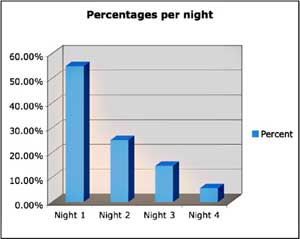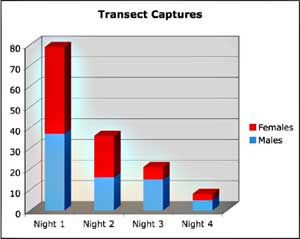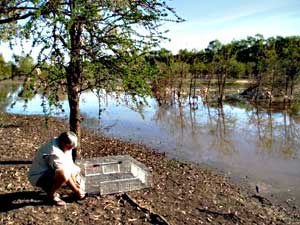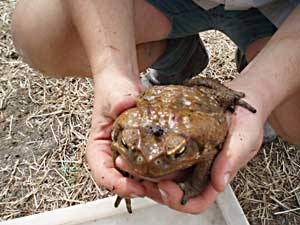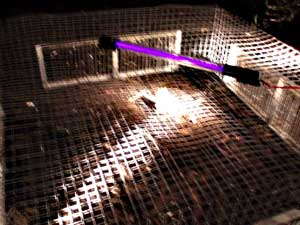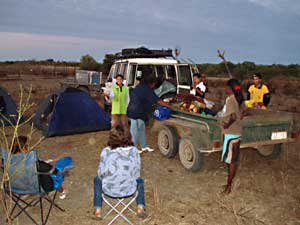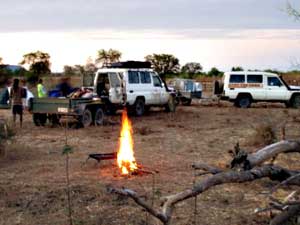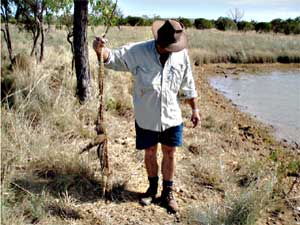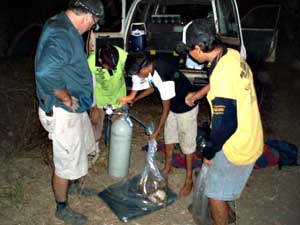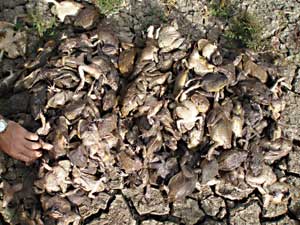

Get your Stop The Toad
bumper sticker here ..

Web Masters:
Use this button to
link back to this site.

Toad News28 June -1 July 2006A Report on the STTF coordinated
|
The Auvergne Lagoon Toadbust was conducted because a visit to the area by STTF board member Russell Gueho, STTF Operations Manager Derek Monks, and Kimberley toadbuster Chris Spur confirmed toads in the area of Auvergne Lagoon on June 17th.
|
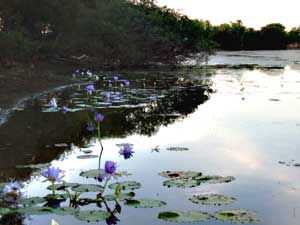 |
||||||||||||||||||||||||
| Toads had previously been sighted in water bodies and creek lines on the same floodplain complex and the visit was an attempt to locate the western edge of the toad front. | 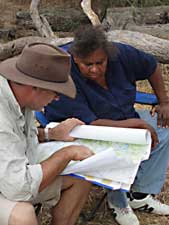 |
||||||||||||||||||||||||
STTF was also keen to conduct a multiple-day toadbust and to involve some of the other groups working on cane toads in the activity, especially people from Timber Creek. The Auvergne lagoon area is a section of the Auvergne Creek system where water remains after much of the plains have dried up and the creek has stopped flowing.
|
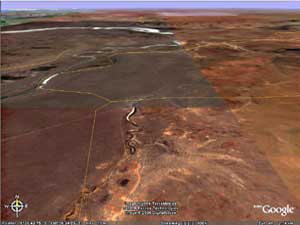 |
||||||||||||||||||||||||
| It is in the area 15 35 29.94 S 130 06 45.15 E and can be viewed at google earth http://www.googleearth.com. | 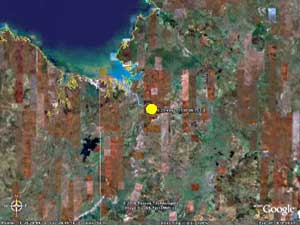 |
||||||||||||||||||||||||
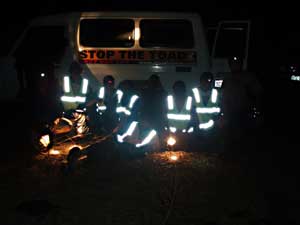 |
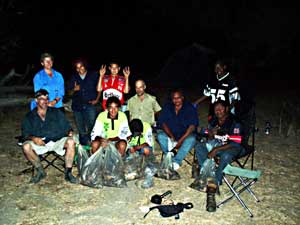 |
||||||||||||||||||||||||
1. CAPTURE RESULTSA total of 571 adult toads were removed from the lagoon system along with some metamorphs at the turkey nest. |
|
||||||||||||||||||||||||
2. NIGHTLY CAPTURESOne of the issues that needs to be considered in planning for Toadbusting activity is the effectiveness of hand collection on any one night due to the fact that not all toads are active on any given night. There is also a need to verify the numbers of animals that are active and the distance from the water’s edge. Both these issues were a focus for the trip and the results are below. Only 4 toads were collected more than 10 metres from the edge of the water and these were on the road approximately 50 – 80 metres from the lagoon edge. Graph 1 shows the results of the ToadBusting per night in terms of the percentage of the total collected on each night along the transect. The result shows clearly the fact that areas need to be “busted” on successive nights if local eradication is to be achieved. Our preliminary estimates of 6 nights may prove to be adequate. Graph 2 shows the total numbers collected from the transect as well as the male female breakdown. |
|
||||||||||||||||||||||||
3. RING LAGOONRing Lagoon is a lagoon on the edge of the Baines River system about 7 km NNW of Auvergne Lagoon. A total of 21 adult toads were collected from Ring Lagoon. This area had significantly fewer cane toads than the lagoon systems further out on the plains. This is probably an indication that the cane toads have moved across the landscape to get to Auvergne Lagoon rather than crossing the river. |
|
||||||||||||||||||||||||
4. OBSERVATIONS AND THOUGHTSThis confirms that the toad front has reached the East Baines River system. There are very significant numbers of large adults in the area and evidence that breeding had occurred in the last 6-8 weeks. With such large numbers it is almost certain there will be toads even further to the west. The exercise gave us some very valuable on ground information and confirmed our fears that toads are well established right across the northern end of our buffer zone. There is no doubt that this is the front line. |
|
||||||||||||||||||||||||
On the positive side, the fact that over half the captures were females is an indicator that toads are already in ‘refuge’ mode due to the cooler, dryer weather. But they are still likely to continue breeding unless the lagoon is cleared of them. The area should be busted again and soon. For some reason there does not appear to have been much breeding in the area despite large numbers of adult female toads and calling males. All of the females we autopsied had developing eggs in them. |
|
||||||||||||||||||||||||
|
It would be a great advantage to get the area cleared of cane toads before they start laying again. The impact on goannas in the area has obviously been devastating. We recorded 17 goanna carcasses, including one that was only a day or two old. A reminder of what we can expect across WA if we fail. There were two live goannas sighted.
|
|
||||||||||||||||||||||||
The smallest toad caught was only 87mm long and 90g weight. There were several others in this size range. Animals of this size would be about 12 months old but are also unlikely to have moved more that 30kms from their birth site. This may be an indicator that the toads have been in areas further west than previously thought where they were not detected last year. We need to revisit surveillance and make sure that we find the most westerly cane toads this dry season. |
|
||||||||||||||||||||||||
Picture of a dead Varanus panoptes, a yellow-spotted monitor. A dead cane toad was found right next to the carcass. |
|
||||||||||||||||||||||||
We used carbon dioxide to euthanase the caught toads but also used clove oil on one toad. The clove oil worked well and the cane toad showed no signs of distress or discomfort. It may be worth carrying a small bottle of clove oil as a back up to the normal gassing process. 3 drops of oil was all that was required. |
|
||||||||||||||||||||||||
5. ACKNOWLEDGEMENTSThe group consisted of people from STTF, the Ngaliwurru Wuli Aboriginal Assoc. Inc. and the Mulayee Women Rangers, the CALM cane toad team, and the Northern Land Council Caring for Country Unit. A special thanks to Ros and Alan Andrews from Auvergne Station for their support for the activity. The Kimberley ToadBusters were unable to attend due to other commitments. |
|
This report is also available here as a 390 kb pdf (opens in new window)
Please forward any queries or comments to
Graeme Sawyer
STTF Regional Coordinator
Mobile 0411881378
Fax: (08) 89411 167
Email
Supported by |
 |
Web Manager: Dave Graham - Web hosting & scripts: Alex Varlakov http://ozup.com/ |


